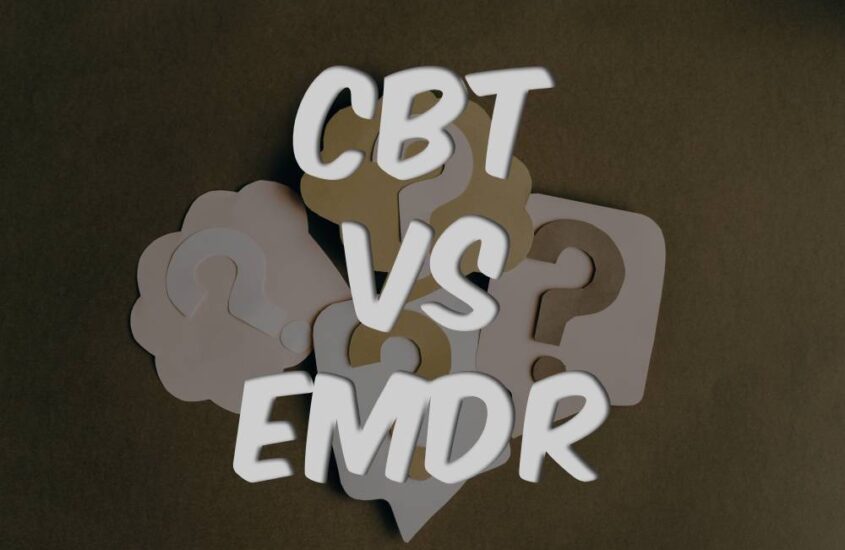What’s the Difference Between CBT & EMDR?

In today’s post, we’ll explore the differences between Cognitive Behavioral Therapy (CBT) and Eye Movement Desensitization and Reprocessing (EMDR). These powerful tools are among the most effective forms of therapy. One helps us challenge unhealthy thoughts and behavioral patterns by learning to meet them head-on and reframe them. At the same time, the other focuses on healing the lasting damage quite literally written into our bodies by past trauma. Understanding the difference between CBT and EMDR is critical to making an informed decision about what type of therapy might be most helpful for you.
Cognitive Behavioral Therapy (CBT)
Fundamentally, CBT is a therapeutic approach that posits our thoughts and behaviors are interconnected. Consider the idea that specific thoughts are often linked to specific behaviors. For some, this means responding to stress with substance abuse or overeating; for others, a sense of shame translates into depression and a desire to isolate.
The purpose of CBT is to resolve unhealthy behaviors by challenging the thoughts that are linked to them. CBT is an action-driven, results-oriented form of talk therapy. First, the client and CBT therapist work together to identify unhealthy patterns and behaviors. Next, they explore the thoughts that underpin those behaviors and challenge them. Because thoughts and behaviors are linked, by learning to challenge our thoughts, we can change our behaviors.
Tools & Techniques
Some people find it helpful to think of CBT as a set of skills and tools. CBT works by helping people to understand their patterns and the origin of their negative thoughts and behaviors. There are several tools CBT employs to help with that process:
- Thought Mapping
- Cognitive Restructuring
- Behavioral Activation
- Exposure Therapy
Managing our thoughts is a skill; as with any new skill, learning it requires practice. Therapists may assign homework or provide guidance on ways to practice these techniques throughout the week.
Eye Movement Desensitization and Reprocessing (EMDR)
In contrast, EMDR is grounded in our scientific understanding of the brain and differences in how traumatic memories are formed and stored in the brain. EMDR approaches trauma as a physiological phenomenon closely linked to the fight-or-flight response we feel during a traumatic experience. The brain stores unprocessed traumatic memories differently than other memories. These memories are often triggered without our realizing it, kicking our body back into fight-or-flight mode. This results in unexplained, often uncontrolled, feelings of anxiety, anger, or sadness.
Bilateral Stimulation
EMDR relies upon bilateral stimulation to assist with memory reprocessing. Bilateral stimulation consists of rapid, back-and-forth eye movements or oscillations in sound or alternate tapping. This stimulation activates areas of the brain where traumatic memories are stored. Under the guidance of a trained EMDR therapist, you focus on those memories in a controlled and safe environment, reprocessing them. Once reprocessed, those memories are no longer distressing.
The EMDR Experience
EMDR Therapists conduct EMDR therapy over the course of several weeks or sometimes through an ‘intensive’ format. While EMDR therapy may touch on your day-to-day life, it aims to identify threads that lead back to traumatic memories linked to those challenges. While CBT focuses on developing a skill set, EMDR focuses on healing old wounds written into the landscape of our brains.
Schedule an Appointment
Both CBT and EMDR are effective, non-pharmacological treatments with a proven track record of success. To learn more about how CBT and EMDR might benefit you, schedule a free consultation today. Whatever challenges you face in life, you don’t have to face them alone.




